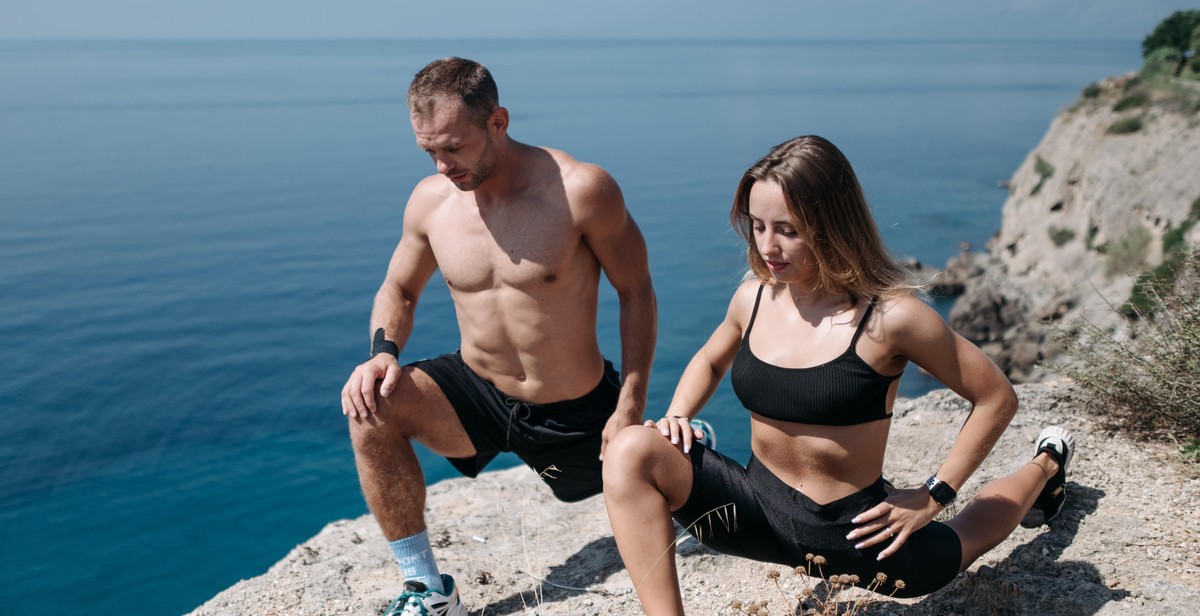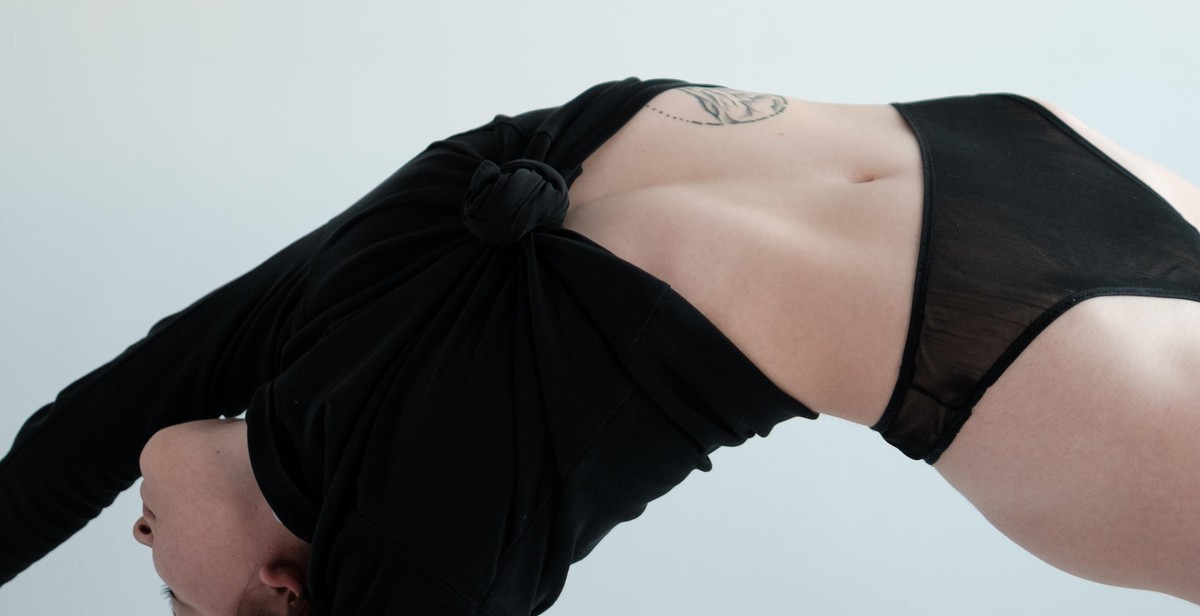Introduction
Flexibility is the ability of your muscles to stretch and move through their full range of motion. Maintaining good flexibility is important for overall health and well-being. It allows you to perform daily activities with ease, such as bending down to tie your shoes or reaching up to grab something from a high shelf. Additionally, it can help prevent injuries by improving your posture and balance.
Stretching exercises are a great way to improve flexibility. They can be done anywhere and at any time, making them a convenient addition to your daily routine. Stretching can also help reduce muscle tension and soreness, increase blood flow to your muscles, and improve your overall athletic performance.
Why is flexibility important?
Good flexibility is important for several reasons:
- Improved range of motion: Flexibility allows you to move your joints through their full range of motion, which can help improve your posture and reduce the risk of injury.
- Reduced muscle tension: Tight muscles can cause discomfort and pain. Stretching can help reduce muscle tension and improve your overall comfort.
- Improved athletic performance: Flexibility can improve your athletic performance by allowing you to move more freely and with greater ease.
- Reduced risk of injury: Flexibility can help reduce the risk of injury by improving your posture, balance, and coordination.
Overall, stretching exercises are an effective and easy way to improve your flexibility and maintain good overall health. In the following sections, we will discuss some of the best stretching exercises for improving flexibility.

Types of Stretching Exercises
Stretching exercises are an essential part of any fitness routine. They help to improve flexibility, increase mobility, reduce the risk of injury, and enhance athletic performance. There are four main types of stretching exercises:
1. Static Stretching
Static stretching involves holding a stretch for a certain amount of time, usually 10-30 seconds. This type of stretching helps to improve flexibility and range of motion. It is commonly used before and after exercise to prevent injury and reduce muscle soreness. Examples of static stretching exercises include hamstring stretches, quad stretches, and calf stretches.
2. Dynamic Stretching
Dynamic stretching involves moving the body through a range of motions without holding a stretch. This type of stretching helps to improve flexibility, increase blood flow, and prepare the body for exercise. It is commonly used as a warm-up before exercise. Examples of dynamic stretching exercises include leg swings, arm circles, and walking lunges.
3. Ballistic Stretching
Ballistic stretching involves bouncing or jerking movements to force the body beyond its normal range of motion. This type of stretching can be dangerous and is not recommended for most people. It can lead to muscle strains, sprains, and other injuries.
4. PNF Stretching
PNF (Proprioceptive Neuromuscular Facilitation) stretching involves a combination of static stretching and isometric contractions. This type of stretching is often used by physical therapists to help patients recover from injuries. It can also be used by athletes to improve flexibility and range of motion. Examples of PNF stretching exercises include the contract-relax method and the hold-relax method.
| Types of Stretching Exercises | Description | Example Exercises |
|---|---|---|
| Static Stretching | Hold a stretch for a certain amount of time | Hamstring stretch, quad stretch, calf stretch |
| Dynamic Stretching | Moving the body through a range of motions without holding a stretch | Leg swings, arm circles, walking lunges |
| Ballistic Stretching | Bouncing or jerking movements to force the body beyond its normal range of motion | Not recommended for most people |
| PNF Stretching | Combination of static stretching and isometric contractions | Contract-relax method, hold-relax method |

How to do Static Stretching
Static stretching involves holding a stretch in a comfortable position for a certain amount of time, usually around 30 seconds. It helps to improve flexibility, reduce muscle tension, and prevent injury. Here are some static stretching exercises for different parts of your body:
Hamstring Stretch
1. Sit on the floor with your legs straight in front of you.
2. Reach forward and try to touch your toes, keeping your knees straight.
3. Hold the stretch for 30 seconds.
Quad Stretch
1. Stand with your feet hip-width apart.
2. Bend your right knee and bring your heel towards your buttocks.
3. Hold your right ankle with your right hand and hold the stretch for 30 seconds.
4. Repeat with your left leg.
Hip Flexor Stretch
1. Kneel on one knee, with your other foot flat on the floor in front of you.
2. Lean forward, keeping your back straight, until you feel a stretch in your hip flexor.
3. Hold the stretch for 30 seconds.
4. Repeat with your other leg.
Calf Stretch
1. Stand facing a wall, with your hands on the wall at shoulder height.
2. Step back with one foot and bend your front knee.
3. Keep your back leg straight and press your heel into the floor.
4. Hold the stretch for 30 seconds.
5. Repeat with your other leg.
Shoulder Stretch
1. Stand with your feet shoulder-width apart.
2. Bring your right arm across your chest and hold it with your left hand.
3. Hold the stretch for 30 seconds.
4. Repeat with your left arm.
Chest Stretch
1. Stand with your feet shoulder-width apart.
2. Clasp your hands behind your back, with your arms straight.
3. Lift your arms up and away from your body.
4. Hold the stretch for 30 seconds.
Tricep Stretch
1. Stand with your feet shoulder-width apart.
2. Raise your right arm above your head and bend your elbow so your hand is behind your head.
3. Use your left hand to gently push your elbow back.
4. Hold the stretch for 30 seconds.
5. Repeat with your left arm.
Bicep Stretch
1. Stand with your feet shoulder-width apart.
2. Raise your right arm in front of you, with your palm facing up.
3. Use your left hand to gently pull your fingers back towards your wrist.
4. Hold the stretch for 30 seconds.
5. Repeat with your left arm.
Neck Stretch
1. Sit or stand with your back straight.
2. Tilt your head to the right, trying to touch your ear to your shoulder.
3. Hold the stretch for 30 seconds.
4. Repeat on the left side.
Remember to breathe deeply and slowly as you hold each stretch. Don’t bounce or force the stretch, and stop if you feel any pain.

How to do Dynamic Stretching
Dynamic stretching involves moving your muscles through a range of motion to increase flexibility and prepare your body for physical activity. Here are some dynamic stretching exercises to help improve flexibility:
Leg Swings
Stand next to a wall or hold onto a stable object for balance. Swing one leg forward and backward, then side to side. Repeat with the other leg.
Arm Swings
Stand with your feet shoulder-width apart. Swing your arms forward and backward, then side to side.
Hip Circles
Stand with your feet shoulder-width apart. Circle your hips clockwise, then counterclockwise.
High Knees
Stand with your feet hip-width apart. Lift one knee up towards your chest, then switch to the other knee. Keep your back straight and engage your core.
Butt Kicks
Stand with your feet hip-width apart. Kick one heel up towards your glutes, then switch to the other heel. Keep your knees close together and engage your core.
Jumping Jacks
Stand with your feet together and arms at your sides. Jump your feet out to the sides and raise your arms overhead. Jump back to the starting position and repeat.
Perform each exercise for 10-15 repetitions or 30-60 seconds per side. Remember to breathe deeply and engage your core throughout the exercises.

How to do Ballistic Stretching
Ballistic stretching is a type of stretching that involves quick, bouncing movements to improve overall flexibility and range of motion. It is important to note that this type of stretching should only be performed after a proper warm-up to prevent injury.
Leg Swings
To perform leg swings, stand with one hand on a stable object for balance. Swing one leg forward and backward, gradually increasing the range of motion with each swing. Repeat on the other leg.
Arm Swings
To perform arm swings, stand with feet shoulder-width apart and swing your arms in a circular motion, gradually increasing the range of motion with each swing. Repeat in the opposite direction.
Hip Circles
To perform hip circles, stand with feet shoulder-width apart and rotate your hips in a circular motion, gradually increasing the range of motion with each circle.
High Knees
To perform high knees, stand with feet hip-width apart and lift one knee towards your chest, alternating legs with each step.
Butt Kicks
To perform butt kicks, stand with feet hip-width apart and kick your heels back towards your buttocks, alternating legs with each kick.
Jumping Jacks
To perform jumping jacks, stand with feet together and jump your legs out while simultaneously raising your arms above your head. Jump back to starting position and repeat.
Performing these ballistic stretches before a workout or physical activity can help improve flexibility and reduce the risk of injury.

How to do PNF Stretching
PNF stretching, or proprioceptive neuromuscular facilitation stretching, is a technique that involves contracting and relaxing muscles to improve flexibility. PNF stretching can be done alone or with a partner and is particularly effective for athletes and people with limited flexibility.
Hamstring Stretch
1. Lie on your back with one leg straight and the other leg bent.
2. Hold onto the back of your thigh with both hands.
3. Push your heel towards the ceiling while keeping your leg straight.
4. Hold for 10 seconds, then relax.
5. Pull your leg towards your chest and hold for 10 seconds.
6. Repeat on the other leg.
Quad Stretch
1. Stand with your feet hip-width apart.
2. Bend your knee and bring your heel towards your buttocks.
3. Hold onto your ankle with one hand and your knee with the other hand.
4. Push your foot towards your buttocks while pulling your knee back.
5. Hold for 10 seconds, then relax.
6. Repeat on the other leg.
Hip Flexor Stretch
1. Kneel on one knee with the other foot in front of you.
2. Lean forward until you feel a stretch in your hip flexor.
3. Hold for 10 seconds, then relax.
4. Repeat on the other leg.
Calf Stretch
1. Stand facing a wall with your hands on the wall.
2. Step one foot back and keep it straight.
3. Bend your front knee and lean towards the wall until you feel a stretch in your calf.
4. Hold for 10 seconds, then relax.
5. Repeat on the other leg.
Shoulder Stretch
1. Stand with your feet hip-width apart.
2. Bring one arm across your chest and hold it with the other arm.
3. Pull your arm towards your chest until you feel a stretch in your shoulder.
4. Hold for 10 seconds, then relax.
5. Repeat on the other arm.
Chest Stretch
1. Stand with your feet hip-width apart.
2. Clasp your hands behind your back.
3. Lift your arms up and away from your body.
4. Hold for 10 seconds, then relax.
Tricep Stretch
1. Stand with your feet hip-width apart.
2. Bring one arm up and bend it so that your hand is behind your head.
3. Use your other hand to gently pull your elbow towards your head.
4. Hold for 10 seconds, then relax.
5. Repeat on the other arm.
Bicep Stretch
1. Stand with your feet hip-width apart.
2. Bring one arm straight up and bend it so that your hand is behind your head.
3. Use your other hand to gently push your elbow towards your head.
4. Hold for 10 seconds, then relax.
5. Repeat on the other arm.
Neck Stretch
1. Sit or stand with your back straight.
2. Tilt your head towards one shoulder.
3. Use your hand to gently pull your head towards your shoulder.
4. Hold for 10 seconds, then relax.
5. Repeat on the other side.
PNF stretching can be done before or after exercise and should be done regularly to see the best results. Remember to listen to your body and not push yourself too far.

Tips for Improving Flexibility
Flexibility is essential for good health, and it can help prevent injuries and improve your overall quality of life. Here are some tips for improving flexibility:
Consistency is Key
Flexibility is not something that you can achieve overnight. It takes time and consistent effort to see improvements. Make stretching a part of your daily routine, even if it’s just for a few minutes.
Listen to Your Body
Pay attention to how your body feels during stretching exercises. If you feel any pain or discomfort, stop immediately. Stretching should never be painful. Instead, focus on gentle stretches that feel good and help you relax.
Start Slow
If you are new to stretching, start slow and gradually increase the intensity and duration of your stretches. Don’t push yourself too hard, as this can lead to injury. Instead, give your body time to adjust and adapt to the new movements.
Use Props
Props such as blocks, straps, and blankets can help you get into deeper stretches and improve your overall flexibility. Use these tools to support your body and make stretching more comfortable and effective.
Stay Hydrated
Drinking plenty of water is essential for good health and flexibility. Dehydration can cause muscle cramps and stiffness, making it harder to stretch effectively. Make sure to drink plenty of water before, during, and after your stretching sessions.
By following these tips, you can improve your flexibility and enjoy the many benefits of stretching exercises. Remember to be patient and consistent, and always listen to your body.

Conclusion
Improving flexibility is essential for leading a healthy and active lifestyle. Stretching exercises are a great way to improve flexibility, reduce the risk of injury, and enhance performance. By incorporating stretching exercises into your daily routine, you can increase your range of motion, improve posture, and alleviate muscle tension.
Tips for Effective Stretching
- Always warm up before stretching to prevent injury.
- Hold each stretch for at least 30 seconds and repeat each stretch 2-3 times.
- Breathe deeply and exhale as you stretch to help relax your muscles.
- Avoid bouncing or jerking movements during stretching as they can cause injury.
- Stretch regularly to maintain and improve flexibility over time.
Final Thoughts
Whether you’re an athlete or someone who sits at a desk for long hours, stretching exercises can benefit everyone. By taking the time to stretch regularly, you can improve your overall physical health and well-being. Remember to start slowly and gradually increase the intensity and duration of your stretching routine. Always listen to your body, and if you experience any pain or discomfort, stop and consult with a healthcare professional.
